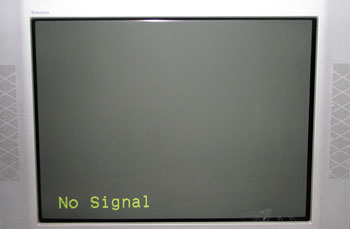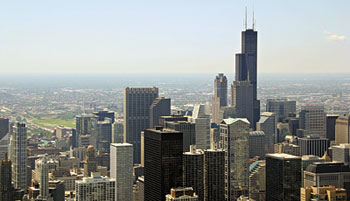Reception Problems Vex Transition
WASHINGTON
America officially crossed into the digital realm on June 12 with something for everyone: high-fives all around for a relatively smooth national transition that involved more than 300-million viewers; enough persistent glitches in some markets to allow naysayers their "I-Told-You-So" moment; and the start of an informal education process by broadcasters and viewers suddenly confronted by DTV idiosyncrasies in the real world.
By June 13, while the vast majority of cable and satellite viewers witnessed virtually no change at all, some of the estimated two-million or more dwellings that depend solely on terrestrial signals discovered reception problems in several markets—notably in the downtown sectors of Chicago, Dallas-Ft. Worth, Boston, Philadelphia, Washington, D.C. and Baltimore, among others. One key glitch in several DMAs involved signal-switching (and switch-backs) to VHF from UHF. (In Boston, NBC affiliate WHDH-TV had to continue to simulcast on its UHF digital channel 42 after its VHF channel 7 was lost on many suburban viewers after June 12.)

Viewers, particularly in urban areas, are experiencing serious reception problems for the high VHF band. In mid-June, the FCC sent staffers to Chicago, Los Angeles and Nashville, among other markets to help deal with one of the most highly publicized problems: reception issues, including WLS-TV in Chicago, (as well as other "channel sevens" in other markets, most of them ABC affiliates). "We've sent staff into some markets to bolster the number of people out there in order to work more closely with our contractors and others to help solve some of the problems coming up—such as antenna choices and rescanning," said FCC spokesman Mark Wigfield.
Nearly a quarter of the more than 1,700 full-power commercial and public TV stations were placed in the VHF band by June 12, according to the FCC—with a majority of the VHF outlets (nearly 450) situated in the high band (chs. 7-13). One of the fastest and trickiest remedies the FCC immediately began to consider post-June 12 was possible power increases. "Our issue with any power boosts, of course, is to avoid any potential problems of interference with other stations, and that's what we're looking at," Wigfield said. "We put out an advisory on double-rescans [because] we don't think a lot of people were aware of it." Double-rescanning requires a viewer to rescan his TV set both unattached, and attached, to a converter box and antenna.
The FCC also thinks many consumers may have purchased UHF-only antennas (or antennas with poor VHF reception). "It was always important to have both a UHF and VHF antenna, but some of the [most popular] antennas on the market were one or the other. It's unfortunate that some people made an investment in just one antenna or the other," Wigfield said.
Ross Heide, senior consulting engineer with Cohen, Dippell & Everist in Washington, D.C., found some reception problems very close to home. "I'm like the 'go-to guy' in my condo building in downtown Washington. Where I live there are people who cannot get channel 7 [WJLA] or channel 9 [WUSA] in digital here with their transmitters only a few miles away, even though they got both channels before in analog with indoor antennas. I'm working on getting my building's [rooftop] VHF/UHF master antenna system upgraded."
Although Washington has the most severe height restrictions of any major market in the country, its newer buildings also hold their fair share of steel, concrete and glass, as well as other potential interference factors. "Actually, I think it's probably the reinforced concrete in the sidewalks and streets here—the 'rebar'—that's the main problem in my area of downtown Washington," Heide said.
In other markets, Heide said his firm has numerous clients that were "surprised" by their respective digital reception issues—"particularly those with 'on-channel' DTV who were just replacing their analog with digital. What concerns the stations most is when they hear [from viewers] something like, 'Oh, we always saw you fine in analog. Now we just can't get you at all.' That really scares [engineers]… You certainly wonder if we got all the planning factors right [prior to] June 12." Heide suggested that engineers "take the extra time to diagnose an individual viewer's problem as best you can, one by one, because it can often serve as a learning tool for both sides."

Within a week after the June 12 transition, the FCC deployed field teams to Chicago and other urban locations to help with reception problems. As widely predicted, some demographic groups were left out of the opening days of the transition for a variety of reasons. Dan Lombardi, DTV coordinator for the Education Fund of the Leadership Conference on Civil Rights in Portland, Ore., believes the mass media's coverage on the transition "further cemented the fact that we have a segment of the population that constantly gets left behind when it comes to issues such as these."
Therefore, Lombardi said, his group was prepared for this post-transition period. "It's the most critical time for traditionally vulnerable communities like seniors, the disabled, foreign-language speakers, and low-income communities. That's why we've kept our assistance centers up and running to ensure that folks have a place to go to get the help they need so they can continue receiving the vital news, the local weather, and any emergency broadcasts that they had always relied on before the switch." Lombardi noted that Portland CBS affiliate KOIN-TV continued to loop transition information on its analog channel after June 12—one of more than 85 markets the FCC said that were offering similar "nightlight" services.
NO DRESS REHEARSAL
Meanwhile, carefully analyzing lingering problems should be a key priority going forward, said Lynn Claudy, NAB's senior vice president for science & technology. "In an idealized world, this would all have happened in the background before the curtain went up on all-digital TV service," he said. "But in the real world, the 'dress rehearsal' for the DTV transition for many stations was also necessarily this current [June 12] 'first performance' of an ever-continuing show—so problems have to be discovered, addressed and fixed in full public view."
Claudy thinks it's unfortunate terrestrial viewers had to be instructed to re-scan or double-rescan, but some long-term relief may be in the offing. In addition to the ATSC PSIP standard, Claudy said a Recommended Practice developed by the CEA Standards Group several years ago known as "CEB-12" has been updated. (Final balloting closed on July 1). CEB-12, among other things, recommends that new receivers scan automatically during "sleep" and other convenient modes.
"That way receivers would always have the current line-up of stations and a fresh program guide without any required consumer intervention," Claudy said. However, few manufacturers have yet to announce plans to implement CEB-12 in new receiver products. Claudy also strongly favors deploying "smart antenna" technology to improve DTV reception.
The FCC's Wigfield adds, "We'd expected there'd be some disruption and sure enough there was some. We think we'll get it all squared away before too long."
Get the TV Tech Newsletter
The professional video industry's #1 source for news, trends and product and tech information. Sign up below.
